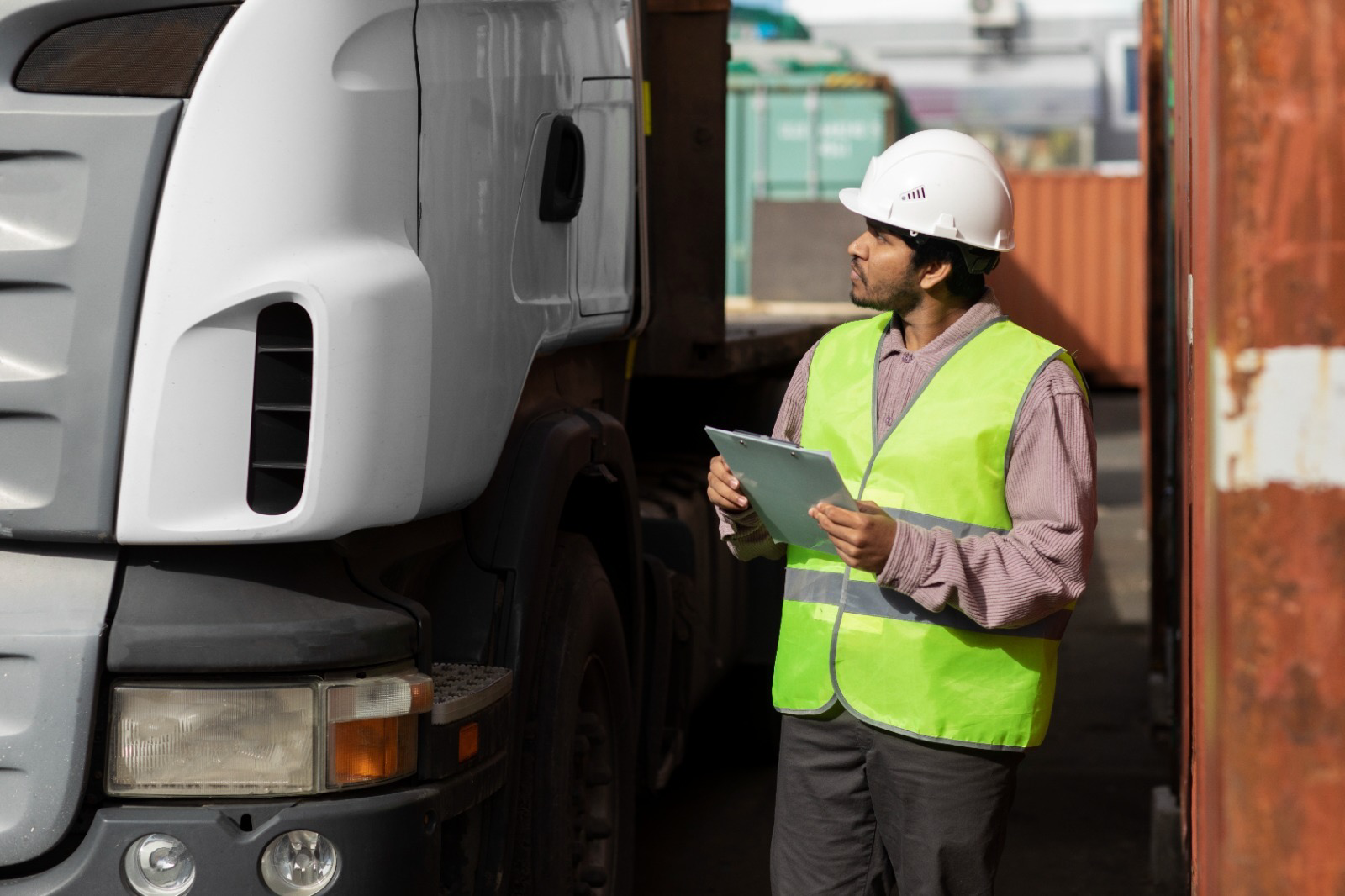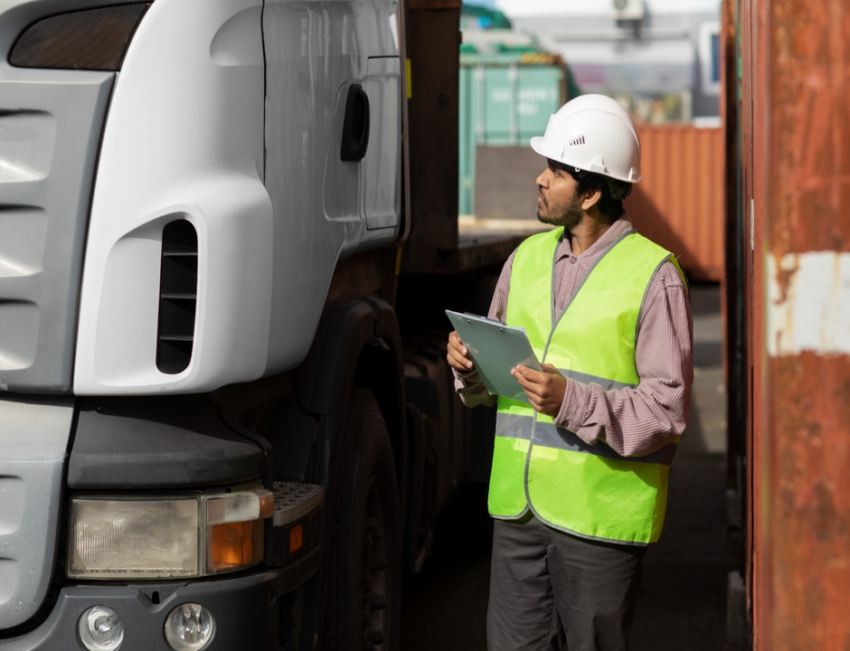Truck platooning technology is poised to transform the road freight industry, enhancing efficiency in trucking, conserving fuel, and reducing harmful emissions. Furthermore, platooning holds the potential to augment the vehicle capacity on our highways, especially along key freight routes. By integrating advanced safety systems with interconnected vehicle technology, trucks can safely and efficiently follow one another, maintaining constant communication and coordination while travelling in close proximity. The widespread implementation of truck platooning across the nations is anticipated to enhance the efficiency of domestic freight transportation, make it more sustainable and bolster the overall economy. Keep reading this blog to find out the advantages that truck platooning holds for the international road freight industry.

Truck platooning in the road freight industry
-
What is truck platooning?
Truck platooning involves trucks autonomously travelling in close-knit formations, maintaining short distances between them, with benefits including improved traffic flow, enhanced safety, fuel efficiency, and reduced CO2 emissions. By harnessing networking technologies and automated driving support systems, truck platooning enables the synchronized movement of two or more trucks in a convoy. During specific segments of their journey, these vehicles autonomously maintain a predetermined, closely spaced formation, with distances between them possibly as short as 12 meters.
The foremost truck in the platoon assumes the role of the leader, with the trucks trailing behind responding and adjusting to its movements, all with minimal to no driver intervention. Initially, drivers maintain full control at all times, affording them the option to exit the platoon and resume individual driving as needed. Every truck within the platoon is outfitted with cameras, and GPS equipment and radar. While a human operator controls the lead truck, the subsequent trucks are envisioned to be completely autonomous in the future. The actions of the lead driver serve as cues for the automated vehicles to adjust and react.
The main benefits of truck platooning
The benefits of platooning can be categorized into two key areas: environmental impact, and safety enhancement in the road freight industry.
Environmental advantages
From an environmental standpoint, the system is estimated to reduce CO2 emissions by up to 10% compared to conventional lorry transportation. This reduction is primarily attributed to maintaining a steady speed, resulting in less braking and accelerating. Additionally, the vehicles following the lead lorry benefit from its slipstream, similar to cyclists in a peloton, which further contributes to fuel savings.
Truck platooning is an integral component of the industry’s comprehensive strategy to further mitigate CO2 emissions. This holistic approach encompasses all factors that influence emissions throughout a truck’s operation. In addition to the vehicle itself, considerations include trailer design, alternative fuels, logistics, infrastructure, and Intelligent Transportation Systems (ITS) technology, such as platooning. Together, these elements play a pivotal role in the collective effort to reduce CO2 emissions.
The significance of this reduction in fuel consumption and emissions should not be underestimated, especially considering that cargo transportation is a major contributor to greenhouse gas emissions around the world and represents a primary source of pollution in urban areas.
Enhanced road safety
In terms of road safety for both drivers and cargo, the automation of driving and braking in platooning brings several significant advantages. It reduces the driver’s reaction time to virtually zero, eliminating potential risk factors associated with human error such as fatigue and distractions – factors that account for a staggering 90% of road accidents. This commitment to efficiency optimizes road transport and helps prevent traffic congestion and tailbacks.
These advantages have a direct positive impact on the companies and organizations that choose to adopt platooning technology. Not only do they realize substantial fuel savings, estimated to constitute up to 30% of lorry transport costs, but they also create improved working conditions for drivers. With the automation of lorries, drivers can engage in other tasks while on the road, reducing stress and tension levels.
These findings are derived from a study conducted by the Dutch consultancy firm TNO on this particular mode of transport, underscoring the multifaceted benefits of platooning for the industry and road safety.
Future of truck platooning for the road freight sector
The Ensemble consortium has been established, bringing together several prominent companies including DAF, DAIMLER, IVECO, MAN, SCANIA, and VOLDO GROUP (which encompasses lorries manufactured under the Volvo and Renault brands). Their collective commitment is to accelerate the realization of truck platooning and ensure that their vehicles are interoperable within these convoy systems.
The concept of truck platooning holds immense promise, but its journey towards full commercialization is fraught with challenges. These obstacles include the need to secure general public support, minimize disruptions to regular traffic flow, and standardize a complex landscape of local and national regulatory norms.
In order for long-haul truck platooning to become a practical and widespread reality, more states must pass legislation authorizing the adoption and use of this technology on public roadways. Without such widespread approval and cooperation, if it remains confined within state borders with disjointed regulations, platooning may neither be viable nor economically sustainable.
In conclusion, despite its significant advantages, truck platooning still faces a lengthy road ahead before it can fully realize its potential and become a commonplace mode of transportation.


